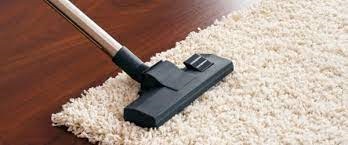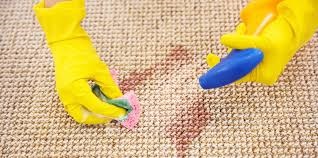A high-quality hand-knotted rug is a long-term investment. If you have spent a significant amount of money on a piece of art or are considering purchasing one, you should take appropriate care of it. With just a little bit of care, you may extend the life of your rugs by 50 years or more.
Here are a few key things to remember :
1. Vacuuming
In nearly all cases, frequent cleaning of a rug using an electric vacuum cleaner is beneficial to the rug’s longevity and appearance. Dirt on the surface of a rug causes it to wear out prematurely, and frequent gentle vacuuming helps to prevent dirt from seeping down into the pile, where it may collect and cause greater wear. Even so, be cautious when using a vacuum cleaner that has a power brush or “beater bar.”

While these powered brushes in the vacuum head enable the vacuum to perform a decent job on machine-made area rugs, they may create a raking effect on the top layer of a rug’s pile if used too vigorously. When cleaning on a regular basis, utilise just the basic vacuum nozzle. For fringes, this is particularly essential; avoid running an upright vacuum or a power brush attachment over the fringes to avoid damaging them.
The brush shatters the fringes and causes them to wear out quickly. Frequently, fringes get snagged and chewed up by the spinning motor of the brush, so try to vacuum along with the nap of the rug rather than along the edge.
2. The rotation of the rugs
Try to rotate contemporary wool rug as often as possible, at the very least once every 3 to 6 months. You should repeat this process more often if you find that the heavy traffic sections of your rug are becoming filthy or if the nap has begun to lose its original direction or form. Additionally, rotate your rugs according to the amount of direct sunshine they get since direct sunlight has the potential to fade the colours in your rugs over time. It is important to rotate your carpets since it will enable them to wear more evenly, which will assist them in retaining their original look and worth longer.
3. Padding
Pads placed beneath rugs may help to prevent the rugs from sliding about, as well as to extend the life of the rug by cushioning the impact between the shoe bottom and the hard floor surface. They also offer comfort while walking over the rugs. The next step is to decide whether or not you need a pad.
A rug pad should be about one inch smaller in size than the rug in order for the pad not to be seen from the front of the rug.

4. Spot Cleaning
Food spills should be dealt with immediately to avoid the spill from drying out completely. Instead of brushing the spill area away, attempt to work directly on it to prevent the spill spot from spreading further. To absorb as much liquid as possible, use paper towels or a clean white cloth to blot the area. Make every effort to remove as much of the spill as possible.
Make use of a tablespoon if required to scrape up all of the debris. Blot the area dry and immediately sponge the area several times with rug shampoo or with a cleaning solution prepared from a combination of 1/4 cup white vinegar, 1/2 teaspoon liquid dishwashing detergent, and 2 cups lukewarm water, repeating the process. You should avoid scrubbing the stain too aggressively since too much manipulation of the pile may spread it. Make certain that you sponge in the direction of the nape of the neck.

Conclusion
Most rug dyes are acid-reactive, which means they react with acid. However, by adding a little amount of white vinegar to the solution, the solution becomes more acidic, which helps to strengthen the connection between the dye and the wool in the rug and also helps to keep the colours from fading away.
Finally, saturate the area with cold, clear water to finish. Make use of absorbent towels or a firm, non-shedding sponge to clean up spills. It is not recommended to use a brush so stiffly that it rips the fibres from the pile. It is important not to scrape the pile too hard. To prevent the floor or pad from becoming wet, place a few towels beneath the area to absorb the water and allow it to dry completely.
